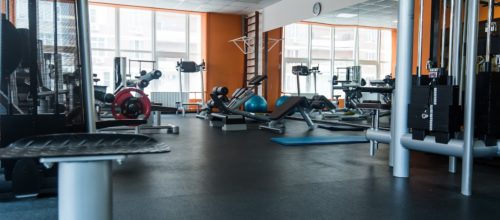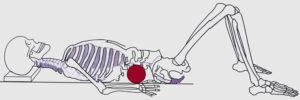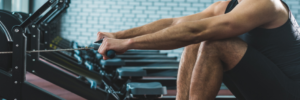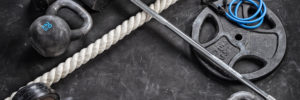
The Weight Room Can Be Your Friend or Foe
You’ve probably heard the phrase “the weight room can be your friend or foe” somewhere before, and there is significant truth to this statement.
Practice some good hip care strategies as a hockey player, and you may notice some improvements in your skating stride.
Practice some good ankle/foot care strategies as a basketball player, and you may notice some improvements in your jumping mechanics.
Practice your squat technique, and you may be able to lift heavier loads without putting your lower body at serious risk of injury.
On the flip side…
Perform sit-ups as a hockey player and your asking for a disc herniation.
Perform high-intensity lower body plyometrics as a basketball player and your asking for a strong case of patellar tendonitis.
Perform heavy squats with poor technique, and you are asking for a host of lower body problems.
Point being.
Do the right things in the weight room, and the weight room will become your friend.
Do the wrong things in the weight room, and the weight room will become your worst enemy.
Pretty simple logic?
Well, the problem is that many recreational weightlifters or athletes that workout to improve their health and performance aren’t sure if they are training in the safest and best ways possible. A recreational weightlifter or athlete may read a few articles on the web, flip-through a fitness magazine, or watch some youtube videos, and then develop a series workouts that they think may benefit them.

Uncertainty and confusion can lead to improper exercise selection and injury. Image licensed from “kues1/stock.adobe.com”
While I am all for getting folks up and moving, the problem with recreational weightlifters or athlete’s training on a program that they may have picked up from the web or magazine is that they may not be “qualified” to do the workout, to begin with, or the individual providing the workout advice may not be qualified to do so. Many recreational weightlifters or athletes tend to have some form of previous injury or current movement limitations, which may prevent them from doing specific exercises that they may be planning on performing. Using myself as an example, just around my 18th birthday, I decided to give up playing competitive hockey for school commitments. While I wouldn’t be on the ice 4-6x a week anymore, I needed a “new” hobby to stay fit, and that’s when I jumped on the CrossFit train. Just around 2013 CrossFit was starting to take off, and I decided to jump into Crossfit style workouts to stay fit.
Well. Let me tell you.. this was not the best decision.
I was performing high-volume and high repetition deadlifts, squats, sit-ups, barbell shoulder presses, hang cleans, etc. All with little regard to form or technique.
I was completely uneducated about training, and as a hockey player just coming out of competition, I was in no business to be jumping into CrossFit.
Roughly two years later, I ended up paying for it.

The “Disc Protrusion” (3rd one to the right) was the cause of my sciatica. Image licensed from “stihii/Shutterstock.com”
All at age 20 years old and I can tell you this was not a pleasant experience finding this out at the time.
Now, while I wouldn’t contribute this all to the Crossfit, and a lot of this probably started to develop as a result of playing hockey for several years competitively, I can tell you that I made this severely worse through the “poor” training regimes that I followed during those two years.
All of this was a result of being uneducated about the fields of injury prevention and strength & conditioning. Not knowing how a herniated disc develops (repeated spinal flexion under load), and not knowing how to perform lifts such as the deadlift, squat, barbell press, or hang clean with the proper technique was my ultimate downfall.
The point of this post is that the things you do in the weight room will specifically affect your health and performance. In my case, I was just trying to stay “fit” after finishing up my competitive hockey career, and I did so in the wrong way, which cost me some severe lower back problems for a few years.
As an individual who is just starting to lift weights or is an athlete looking to improve their performance, I highly suggest you become educated about weightlifting (e.g., learning proper technique, recovery strategies) or work with an experienced trainer/coach in your field that can help you with your specific goals. The investment of highering a good trainer/coach can be the difference between you preventing a serious injury versus creating a serious injury. Similar can be said for athletes. An athlete with a good trainer/coach may have a 15-year high-performance career versus an athlete without a good trainer/coach may only end up with 6-year high-performance career.
Injuries are the number 1 factor that limits performance. If you get injured, you can’t perform to your standards.
Don’t be like me when I was 18-20 years old. If you’re unsure about weight training or exercise, do your research and find a good trainer/coach that can help you. That would be my piece of advice to anyone looking to improve their health or performance.
Salute,
Remi
Thumbnail Image Licensed from “greentellect/stock.adobe.com”











